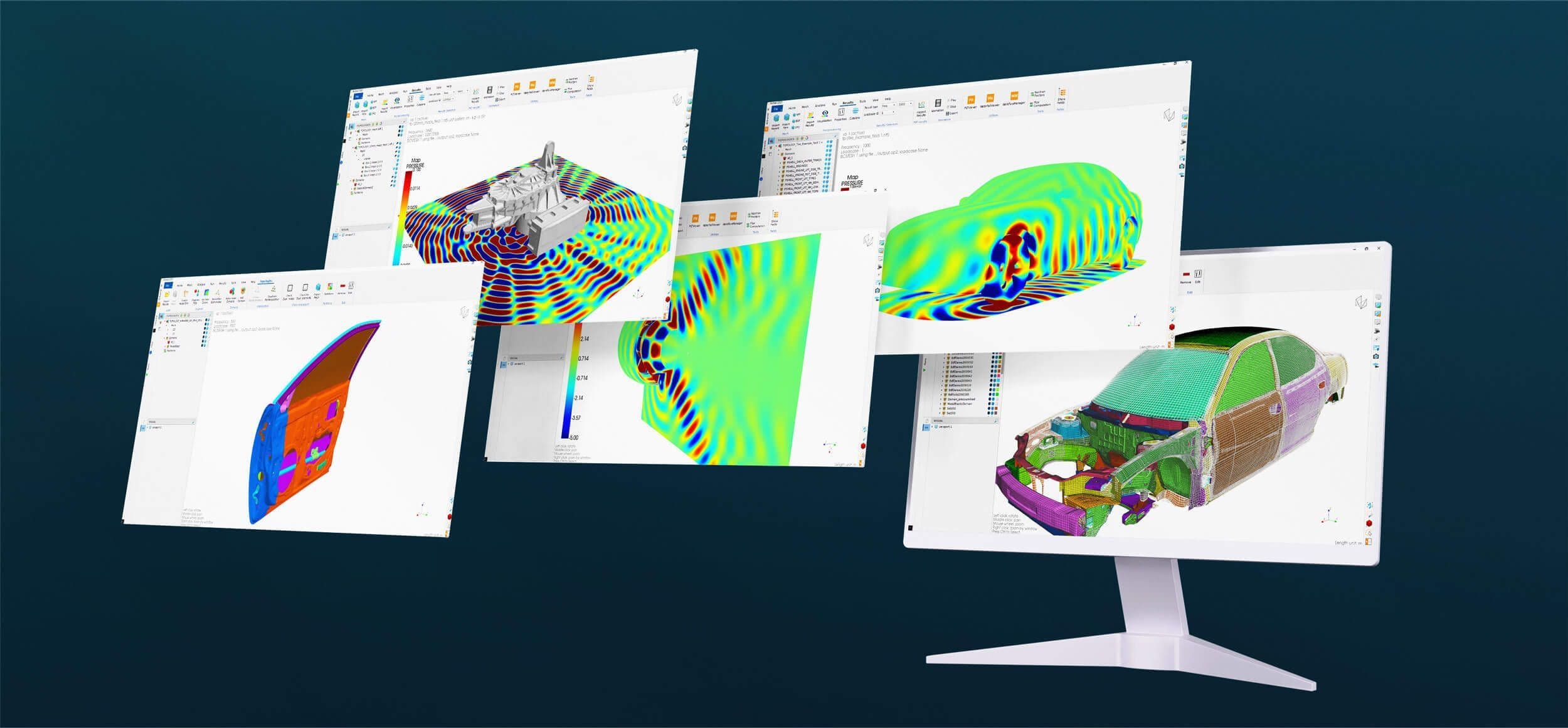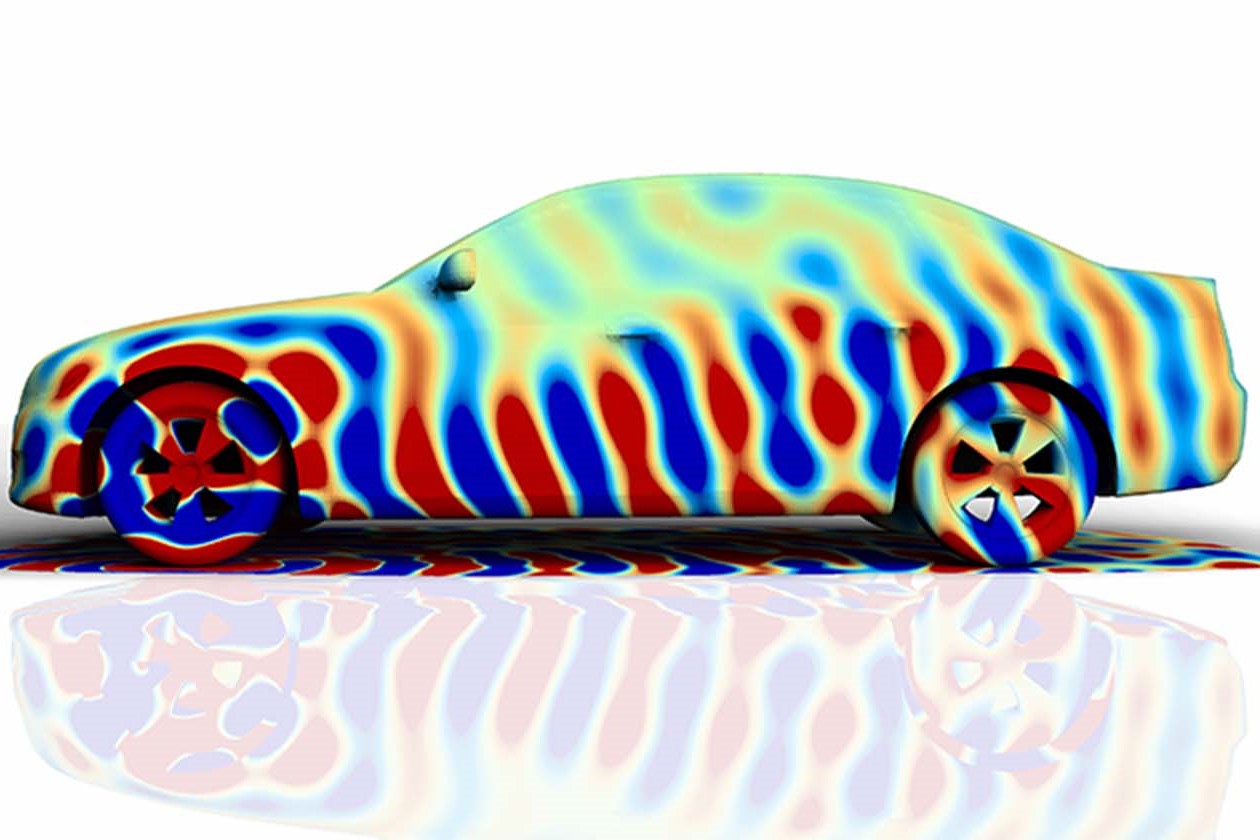© 2025 Hexagon AB and/or its subsidiaries
© 2025 Hexagon AB and/or its subsidiaries

Swift and intuitive acoustic prediction tools to deliver high-performing products
Actran enables you to push the boundaries of acoustic design, by reducing product development time and gathering increased insights into how to improve product performance. Its advanced simulation tools make predicting acoustic issues a seamless task.
Benefits And Features
A complete acoustic simulation solution for tackling any acoustic or noise problem.

Actran Acoustics
Actran Acoustics is the foundation module of the Actran family. It is both a standalone tool and is a pre-requisite for advanced modules like ActranVibroAcoustics, ActranAeroAcoustics, Actran for Trimmed Body, and Actran TM.

Actran VibroAcoustics
With the ability to simulate realistic modeling boundary conditions by combining dynamic, kinematic and acoustic constraints, as well as physical excitations like diffuse sound field and turbulent boundary layer, ActranAeroAcoustics can obtain accurate representation of the acoustic performance of your designs.

Actran AeroAcoustics
Using ActranAeroAcoustics, the noise generated by any turbulent flow can be thoroughly predicted. Users can benefit from all features of the Actran software suite to study the interaction between the aeroacoustic noise sources and a vibrating structure, absorbent materials, or acoustic traps such as resonators.
What's New
Learn about the latest in Actran 2025.1
Hexagon is proud to announce the release of Actran 2025.1, with its large improvements to the WorkflowManager. This version offers a brand new ePowertrain workflow, extended capabilities for the EM Noise workflow, documentation for some crucial workflow manager applications, and many more features.
Training and Resources
Connect and collaborate with your peers and experts
The Nexus Community provides you with excellent peer forums and the opportunity to learn from thousands of others in your industry. Currently, hundreds of peer forums waiting for you to explore into. Discover best practices and get the answers you need to succeed. Register for Nexus to get full access the Community forums.
Our team is ready to help
Our technical support teams are on hand to answer your questions. Contact us through our online form and we will get right back to you.
You might be interested in...
Related products

Swift and intuitive acoustic prediction tools to deliver high-performing products
Actran enables you to push the boundaries of acoustic design, by reducing product development time and gathering increased insights into how to improve product performance. Its advanced simulation tools make predicting acoustic issues a seamless task.
Getting to know Actran
Getting to know Actran
View this short video to learn more about the capabilities of Actran.

Getting to know Actr...
View this sh...
Take advantage of various learning opportunities
Visit the Nexus Academy Catalog for a complete list of educational content. You can enroll for training, complete self-paced courses, register for distance learning, classroom instruction, live training events, and download or print your completion certificate.

Dive into our documentation to explore the full potential of our product offerings
Your ultimate resource for practical guidance and support. Here you’ll find a wealth of step-by-step how-to guides, detailed tutorials, and handy tips and tricks. Whether you’re troubleshooting an issue or looking for ways to optimize your use of our products, our Documentation Center provides clear and concise information to help you get the most out of your experience.

Downloads are only available on the desktop version. Please access our site from a desktop to download.
This product does not offer any software downloads.
Frequently Asked Questions
Following article explains how to perform the difference between two maps in Actran VI on a demo case. The demo case is the turbomachine inlet from Actran TM training material workshop. Difference of acoustic pressure radiated by the nacelle inlet (in no flow) between Hardwall and Softwall configurations is performed and visualized. NFF database with the difference of acoustic pressure is finally exported.
Following article explains how to:
- Set-up the reference spectrum of a DSF with a value per discrete frequency or a value per (third-)octave band
- Check that reference spectrum specified by the user has been accurately applied
Following article aims at:
- Providing guidelines for
+ either the conversion of Nastran model into an Actran model
+ or the use of Nastran modal basis into Actran
- Validating on a simple model:
+ Conversion of Nastran structure model into Actran structure model
+ Use of Nastran structure modal basis in Actran
Incident power is commonly assessed to compute structure TL under Diffuse Sound Field excitation. Following article explains how to compute an equivalent incident power when structure is loaded by a deterministic excitation such a distributed pressure.
Periodic boundary conditions enable to model an angular sector instead of a full 3D model. This leads to lower computation time and lower consumed RAM. Following article explains how to define periodic boundary condition in Actran. It also presents a demo case validating the feature by comparing results on an angular sector and results on a full 3D model.